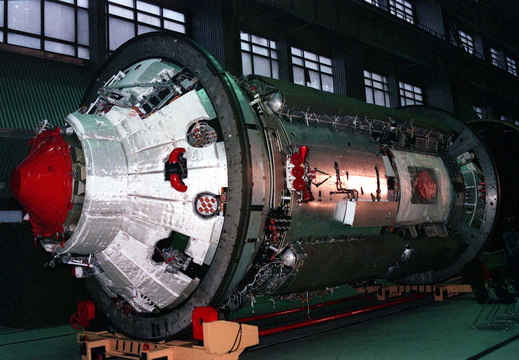
ZARYA
Module Overview
Zarya, meaning "Sunrise" in Russian, is also known as the Functional Cargo Block (FGB). It was the inaugural component of the International Space Station (ISS), launched on November 20, 1998. Built by Russia's Khrunichev State Research and Production Space Center under a subcontract to The Boeing Company for NASA, Zarya was funded by the United States. Its primary purpose was to provide early power, propulsion, and guidance to the ISS during its initial assembly stages.
Key Details
- Launch Date: November 20, 1998, 06:40 UTC
- Launch Vehicle: Proton-K
- Launch Site: Baikonur Cosmodrome, Kazakhstan
- Mass: 19,323 kg (42,600 lbs)
- Length: 12.56 m (41.2 ft)
- Diameter: 4.11 m (13.5 ft)
- Pressurized Volume: 71.5 m³ (2,520 cu ft)
Objectives
The primary objectives of the Zarya module included:
Providing initial power and propulsion capabilities for the ISS.
Offering guidance and navigation control during the early assembly phases.
Serving as a docking port for visiting spacecraft.
Facilitating fuel storage and transfer to support station-keeping and orbital adjustments.
Mission Highlights
- Launch and Orbital Insertion: Zarya was successfully launched into orbit aboard a Russian Proton-K rocket from the Baikonur Cosmodrome on November 20, 1998. This event marked the beginning of the ISS assembly in space.
- Docking with Unity Module: On December 6, 1998, the Space Shuttle Endeavour (STS-88 mission) delivered the Unity module to orbit. The crew captured Zarya and mated it with Unity, forming the initial core of the ISS.
- First Assembly in Orbit: The mating of Zarya and Unity was the first-ever on-orbit assembly of space station modules from different countries—Russia and the United States.
- Early Operations: In its initial phase, Zarya provided essential functions such as power generation, propulsion, and guidance for the nascent space station.
- Transition of Functions: With the arrival of subsequent modules like Zvezda, Zarya's primary systems were superseded, and it transitioned to a secondary role mainly as a storage and logistics hub.
Current Status
As of 2025, Zarya remains an integral part of the ISS. While its original guidance and power functions have been overtaken by other modules, it continues to be used for cargo storage and fuel transfer within the Russian segment.
Legacy
Zarya marked the dawn of a new era in space exploration, being the first module of the ISS and a product of U.S.-Russian collaboration. It laid the foundation for over two decades of continuous human presence in orbit and symbolized a significant achievement in peaceful international cooperation.
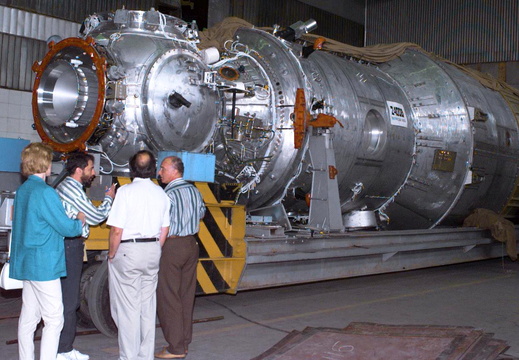
ZVEZDA
Module Overview
Zvezda, meaning "Star" in Russian, is also known as the Service Module. It serves as the structural and functional center of the Russian Orbital Segment (ROS) of the International Space Station (ISS). Launched on July 12, 2000, Zvezda was the third module to join the ISS, providing essential life support systems, living quarters, and serving as the primary command and control center for the Russian segment. Its design is based on the Mir-2 space station core module, reflecting a lineage that traces back to the Salyut program. [https://en.wikipedia.org/wiki/Zvezda_(ISS_module)]
Key Details
- Launch Date: July 12, 2000, 04:56 UTC
- Launch Vehicle: Proton-K
- Launch Site: Baikonur Cosmodrome, Kazakhstan
- Mass: Approximately 20,300 kg (44,750 lbs)
- Length: 13.1 m (43 ft)
- Diameter: 4.15 m (13.6 ft)
- Solar Array Span: 29.7 m (97.4 ft)
- Pressurized Volume: 90 m³ (3,200 cu ft)
Objectives
The primary objectives of the Zvezda module include:
Providing living quarters and life support systems for the crew.
Serving as the primary command and control center for the Russian segment.
Distributing electrical power and managing data processing systems.
Maintaining orbital altitude and attitude control through its propulsion systems.
Facilitating docking for visiting spacecraft.
Mission Highlights
- Launch and Orbital Insertion: Zvezda was successfully launched into orbit aboard a Russian Proton-K rocket from the Baikonur Cosmodrome on July 12, 2000. This launch marked a significant milestone in the ISS assembly, as Zvezda provided critical capabilities for long-duration human habitation. [https://www.nasa.gov/international-space-station/zvezda-service-module/]
- Automated Docking with ISS: On July 26, 2000, Zvezda autonomously docked with the already orbiting Zarya and Unity modules, forming the early core of the ISS. This automated docking demonstrated advanced rendezvous and docking technologies. [https://www.nasa.gov/history/space-station-20th-zvezda-service-module-reaches-iss/]
- Initiation of Permanent Human Presence: With Zvezda's integration, the ISS was equipped with essential life support and living quarters, paving the way for the arrival of the first long-duration crew (Expedition 1) in November 2000. This marked the beginning of continuous human presence aboard the ISS. [https://airandspace.si.edu/stories/editorial/zvezda-service-module-celebrates-15-years-orbit]
- Structural and Functional Center: Zvezda serves as the structural and functional hub of the Russian Orbital Segment, housing critical systems for guidance, navigation, and control. It also provides docking ports for Soyuz and Progress spacecraft, supporting crew rotations and cargo resupply missions. [https://en.wikipedia.org/wiki/Zvezda_(ISS_module)]
- Extended Service Life: Originally designed for a 15-year lifespan, Zvezda has exceeded expectations by remaining operational well beyond its intended duration, contributing significantly to the longevity and success of the ISS program. [https://airandspace.si.edu/stories/editorial/zvezda-service-module-celebrates-15-years-orbit]
Current Status
As of April 2025, Zvezda continues to function as a vital component of the ISS. However, it has experienced challenges, including air leaks in the transfer chamber (PrK), which have been monitored and addressed by both Russian and international partners to ensure crew safety and module integrity. [https://spacenews.com/nasa-monitoring-increased-leak-in-russian-iss-module/]
Legacy
The integration of Zvezda into the ISS marked a pivotal moment in international cooperation in space exploration. As the cornerstone of the Russian Orbital Segment, Zvezda has played a crucial role in enabling long-term human habitation in space, supporting scientific research, and fostering collaboration among spacefaring nations.
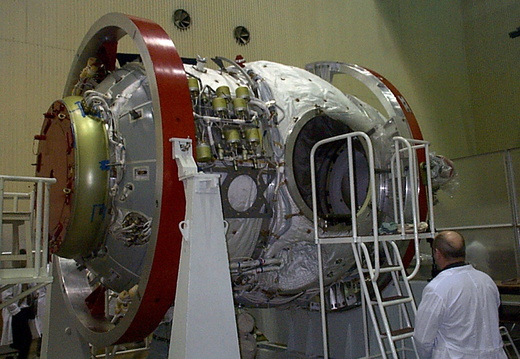
PIRS
Module Overview
Pirs, meaning "Pier" in Russian, also known as Docking Compartment-1 (DC-1) or Stykovochny Otsek 1 (SO-1), was a Russian module on the International Space Station (ISS). Launched on September 14, 2001, Pirs served as both a docking port for Soyuz and Progress spacecraft and as an airlock for extravehicular activities (EVAs) conducted by cosmonauts using Orlan spacesuits. The module was attached to the nadir (Earth-facing) port of the Zvezda service module. [https://www.nasa.gov/international-space-station/pirs-docking-compartment/]
Key Details
- Launch Date: September 14, 2001
- Launch Vehicle: Soyuz-U
- Launch Site: Baikonur Cosmodrome, Kazakhstan
- Mass: Approximately 3,580 kg (7,890 lbs)
- Length: 4.91 m (16 ft)
- Diameter: 2.55 m (8.4 ft)
- Pressurized Volume: 13 m³ (459 cu ft)
Objectives
The primary objectives of the Pirs module included:
Providing an additional docking port for Russian spacecraft, specifically Soyuz crewed vehicles and Progress cargo resupply ships.
Serving as an airlock to facilitate spacewalks (EVAs) by cosmonauts wearing Orlan spacesuits.
Enabling the transfer of propellant between the Zvezda or Zarya modules and docked vehicles such as Soyuz or Progress spacecraft. [https://www.nasa.gov/international-space-station/pirs-docking-compartment/]
Mission Highlights
- Launch and Docking: Pirs was launched on September 14, 2001, aboard a Soyuz-U rocket, utilizing a modified Progress spacecraft (Progress DC-1) as an upper stage. It successfully docked to the nadir port of the Zvezda service module on September 17, 2001. [https://en.wikipedia.org/wiki/Pirs_(ISS_module)]
- Integration and Activation: Following docking, Pirs was configured during three spacewalks by the Expedition 3 crew, integrating it into the ISS's Russian segment. [https://en.wikipedia.org/wiki/Pirs_(ISS_module)]
- Support for EVAs: Pirs facilitated numerous spacewalks, serving as the primary airlock for Russian Orlan-suited cosmonauts. [https://www.nasa.gov/international-space-station/pirs-docking-compartment/]
- Docking Operations: The module provided a docking port for Soyuz and Progress spacecraft, supporting crew rotations and cargo resupply missions. [https://www.nasa.gov/international-space-station/pirs-docking-compartment/]
- Decommissioning and Replacement: To make way for the new Nauka module, Pirs was decommissioned and undocked from the ISS on July 26, 2021, attached to the Progress MS-16 spacecraft. It subsequently re-entered Earth's atmosphere and burned up, marking the first permanent decommissioning of an ISS module. [https://www.nasaspaceflight.com/2021/07/farewell-pirs/]
Legacy
Over nearly two decades, Pirs played a crucial role in ISS operations by enabling safe and efficient docking and spacewalk activities. Its decommissioning paved the way for the expansion of the Russian segment with the addition of the Nauka multipurpose laboratory module, reflecting the ongoing evolution of the space station to support advanced scientific research and international collaboration. [https://www.nasaspaceflight.com/2021/07/farewell-pirs/]
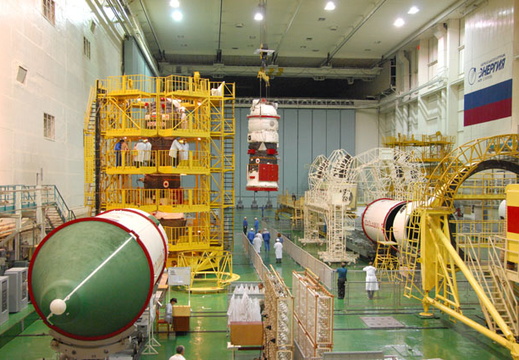
POISK
Module Overview
Poisk, meaning "Search" in Russian, is also known as the Mini-Research Module 2 (MRM2). It serves as both a docking module and an airlock on the International Space Station (ISS). Launched on November 10, 2009, Poisk is attached to the space-facing (zenith) port of the Zvezda service module. Its design is nearly identical to the Pirs Docking Compartment, providing additional capabilities for docking, extravehicular activities (EVAs), and scientific research. [https://www.nasa.gov/international-space-station/poisk-mini-research-module-2-yezof/]
Key Details
- Launch Date: November 10, 2009
- Launch Vehicle: Soyuz-U
- Launch Site: Baikonur Cosmodrome, Kazakhstan
- Mass: Approximately 3,580 kg (7,900 lbs)
- Length: 4.91 m (16.1 ft)
- Diameter: 2.55 m (8.4 ft)
- Pressurized Volume: 12.5 m³ (441.5 cu ft)
Objectives
The primary objectives of the Poisk module include:
Providing an additional docking port for Soyuz crew ships and Progress cargo vehicles.
Serving as an airlock to facilitate spacewalks (EVAs) conducted by cosmonauts using Orlan spacesuits.
Offering extra space for scientific experiments and housing power supply outlets for external payloads. [https://www.nasa.gov/international-space-station/poisk-mini-research-module-2-yezof/]
Mission Highlights
- Launch and Docking: Poisk was launched on November 10, 2009, aboard a Soyuz-U rocket from the Baikonur Cosmodrome. It docked to the zenith port of the Zvezda service module on November 12, 2009. [https://www.nasa.gov/international-space-station/poisk-mini-research-module-2-yezof/]
- Integration and Activation: Following docking, Poisk was integrated into the ISS, providing additional docking capabilities and serving as a new airlock for Russian segment spacewalks.
- Support for EVAs: Poisk has been used as an airlock for numerous spacewalks, facilitating maintenance and assembly tasks on the ISS. [https://www.nasa.gov/international-space-station/poisk-mini-research-module-2-yezof/]
- Docking Operations: The module has supported the docking of various Soyuz and Progress spacecraft, playing a crucial role in crew rotations and cargo resupply missions.
- Scientific Research: Poisk provides additional space and power outlets for scientific experiments, contributing to the ISS's research capabilities. [https://www.nasa.gov/international-space-station/poisk-mini-research-module-2-yezof/]
Current Status
As of April 2025, Poisk remains an active and integral part of the ISS, continuing to support docking operations, spacewalks, and scientific research. It serves as the primary airlock for the Russian segment following the departure of the Pirs module in 2021. [https://en.wikipedia.org/wiki/Poisk_(ISS_module)]
Legacy
The addition of Poisk to the ISS enhanced the station's capabilities in docking, extravehicular activities, and scientific research. Its continued operation underscores its importance in supporting the ongoing missions and objectives of the International Space Station.
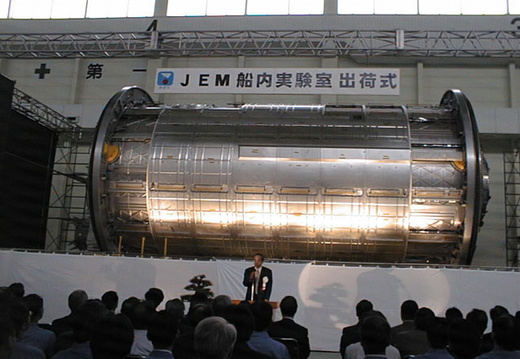
KIBO
Module Overview
Kibo, meaning "Hope" in Japanese, is the Japanese Experiment Module (JEM) and serves as Japan's primary contribution to the International Space Station (ISS). It is the largest single module on the ISS and provides a platform for a wide range of scientific research in space. Kibo consists of multiple components, including a pressurized laboratory, an exposed facility for experiments requiring direct exposure to space, a logistics module for storage, and a robotic arm for handling experiments and equipment. [https://www.nasa.gov/international-space-station/japanese-experiment-module-kibo/]
Key Details
- Launch Dates and Assembly:
- Experiment Logistics Module - Pressurized Section (ELM-PS): March 11, 2008 (STS-123)
- Pressurized Module (PM): May 31, 2008 (STS-124)
- Exposed Facility (EF) and Experiment Logistics Module - Exposed Section (ELM-ES): July 15, 2009 (STS-127)
- Launch Vehicle: Space Shuttle
- Launch Site: Kennedy Space Center, Florida, USA
- Mass: Approximately 15,900 kg (35,053 lbs) for the Pressurized Module
- Dimensions:
- Pressurized Module: Length: 11.2 m (36.7 ft), Diameter: 4.4 m (14.4 ft)
- Exposed Facility: Dimensions: 5.6 m × 5.0 m × 4.0 m (18.4 ft × 16.4 ft × 13.1 ft)
Objectives
The primary objectives of the Kibo module include:
Facilitating a wide array of scientific experiments in microgravity, including research in biology, physics, materials science, medicine, and Earth observation.
Providing an external platform (Exposed Facility) for experiments requiring exposure to the space environment, such as astronomical observations and space environment measurements.
Offering storage and logistical support for scientific equipment and supplies through its Experiment Logistics Modules.
Utilizing the Remote Manipulator System (JEMRMS), a robotic arm, to handle payloads and support maintenance tasks on the Exposed Facility.
Mission Highlights
- Launch and Assembly: Kibo was assembled over three Space Shuttle missions. The Experiment Logistics Module - Pressurized Section (ELM-PS) was delivered by STS-123 in March 2008, the Pressurized Module (PM) by STS-124 in May 2008, and the Exposed Facility (EF) along with the Experiment Logistics Module - Exposed Section (ELM-ES) by STS-127 in July 2009. [https://www.nasa.gov/mission_pages/shuttle/shuttlemissions/sts123/main/index.html] [https://www.nasa.gov/mission_pages/shuttle/shuttlemissions/sts124/main/index.html] [https://www.nasa.gov/mission_pages/shuttle/shuttlemissions/sts127/main/index.html]
- Scientific Research: Kibo has hosted numerous experiments across various disciplines, contributing significantly to our understanding of microgravity effects and advancing technologies for future space exploration. [https://www.nasa.gov/international-space-station/japanese-experiment-module-kibo/]
- Robotic Operations: The JEM Remote Manipulator System (JEMRMS) has been instrumental in deploying and retrieving experiments on the Exposed Facility, as well as assisting in maintenance tasks on the ISS. [https://humans-in-space.jaxa.jp/en/kibo/]
- International Collaboration: Kibo represents a significant international partnership, showcasing Japan's commitment to space exploration and scientific research alongside global partners. [https://global.jaxa.jp/projects/iss_human/kibo/]
Current Status
As of April 2025, Kibo remains a vital component of the ISS, actively supporting a diverse range of scientific experiments and technological demonstrations. Its facilities continue to enable groundbreaking research that benefits humanity and informs future space missions. [https://www.nasa.gov/international-space-station/japanese-experiment-module-kibo/]
Legacy
Kibo has significantly enhanced the scientific capabilities of the ISS, providing unique opportunities for research in the microgravity environment of space. Its successful development and operation underscore the importance of international collaboration in advancing human space exploration and expanding our understanding of the universe.
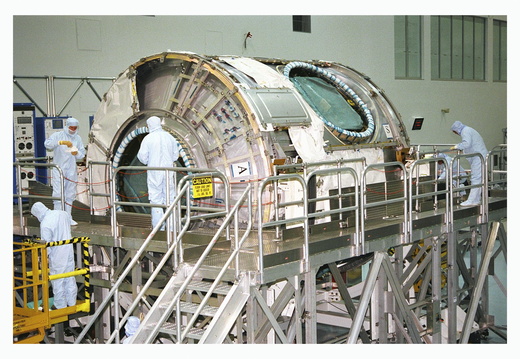
UNITY
Module Overview
Unity, also known as Node 1, was the first American-built component of the International Space Station (ISS). Launched aboard the Space Shuttle Endeavour on December 4, 1998, during mission STS-88, Unity serves as a central connecting hub, linking various modules and providing essential electrical and fluid connections. It was the second module to join the ISS following the Russian Zarya module.
Key Details
- Launch Date: December 4, 1998
- Launch Vehicle: Space Shuttle Endeavour (STS-88)
- Launch Site: Kennedy Space Center, Florida, USA
- Mass: Approximately 11,600 kg (25,600 lbs)
- Length: 5.47 m (17.9 ft)
- Diameter: 4.57 m (15 ft)
- Pressurized Volume: 70.8 m³ (2,500 cu ft)
Objectives
The primary objectives of the Unity module included:
Serving as a central node connecting ISS modules, including the U.S. Destiny laboratory and the Russian Zarya module.
Providing critical systems for distributing power, data, thermal control fluids, and environmental life support throughout the station.
Acting as an internal passageway for crew movement and logistics transfer between station modules.
Mission Highlights
- Launch and Assembly: Unity was launched aboard the Space Shuttle Endeavour (STS-88) on December 4, 1998, marking the beginning of U.S. participation in the ISS program.
- Initial Docking: On December 6, 1998, Unity was mated with the already orbiting Russian Zarya module, marking the first physical connection between U.S. and Russian segments.
- First Assembly Mission: STS-88 astronauts Jerry Ross and James Newman performed spacewalks to complete the initial connections, integrating Unity with Zarya.
- Infrastructure Support: Unity’s internal systems became the foundational infrastructure for distributing critical utilities throughout the growing space station.
- Continued Expansion: Over the years, Unity has supported the attachment of several modules, including the Destiny Laboratory, the Quest Airlock, and Tranquility Node 3, playing an essential role in the ISS’s ongoing growth and operation.
Current Status
As of 2025, Unity remains a critical component of the ISS, continuing to function as a vital connector and hub, facilitating crew and cargo movement, and supporting the life support and environmental control systems throughout the station.
Legacy
Unity symbolizes international cooperation in space, serving as a cornerstone module that linked multiple nations' space programs. Its successful deployment and ongoing operation have been instrumental in establishing a continuous human presence in orbit, laying the foundation for decades of collaborative space exploration and research.
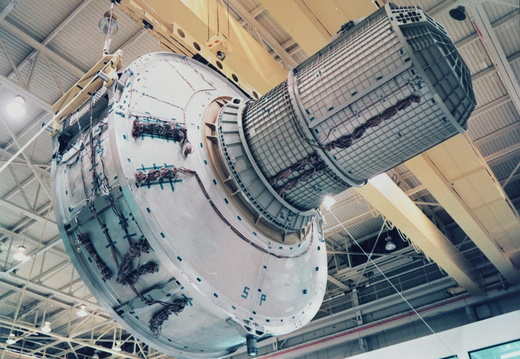
QUEST
Module Overview
Quest, also known as the Joint Airlock, is the primary airlock used for extravehicular activities (EVAs, or spacewalks) aboard the International Space Station (ISS). Designed and built in the United States, Quest was delivered and installed on the ISS during Space Shuttle Atlantis mission STS-104, launched on July 12, 2001. Quest allows astronauts to safely exit and re-enter the station for spacewalks, supporting both American (EMU) and Russian (Orlan) spacesuits.
Key Details
- Launch Date: July 12, 2001
- Launch Vehicle: Space Shuttle Atlantis (STS-104)
- Launch Site: Kennedy Space Center, Florida, USA
- Mass: Approximately 6,064 kg (13,368 lbs)
- Length: 5.5 m (18 ft)
- Diameter: 4 m (13 ft)
- Pressurized Volume: Approximately 34 m³ (1,200 cu ft)
Objectives
The primary objectives of the Quest airlock include:
Serving as the main exit and entry point for astronauts conducting spacewalks on the U.S. segment of the ISS.
Supporting pre- and post-EVA procedures, including spacesuit storage, maintenance, and pressurization.
Providing compatibility with both American EMU spacesuits and Russian Orlan suits.
Facilitating the transfer of equipment and experiments between the internal ISS environment and outer space.
Mission Highlights
- Launch and Installation: Quest was successfully delivered and installed on the ISS by astronauts aboard Space Shuttle Atlantis (STS-104) in July 2001.
- First Use: Astronauts Michael Gernhardt and James Reilly conducted the first spacewalk from Quest on July 20, 2001, successfully testing the airlock’s systems and functionality.
- Flexible Suit Compatibility: Quest’s design uniquely accommodates both NASA’s EMU and Russia’s Orlan suits, making it versatile and crucial for international cooperation.
- Vital EVA Support: Quest has facilitated numerous essential spacewalks required for maintenance, upgrades, and construction tasks crucial to the ISS’s continued operation.
- Continuous Operation: Since its installation, Quest has remained in continuous use, supporting numerous ISS expeditions and helping maintain station integrity through critical repair and upgrade EVAs.
Current Status
As of 2025, Quest continues to function as the primary airlock for all EVAs conducted from the ISS’s U.S. segment. It remains instrumental for ongoing station maintenance, upgrades, and international research activities.
Legacy
Quest symbolizes international cooperation in human spaceflight, providing a critical capability for sustaining human operations and exploration beyond Earth's atmosphere. Its successful long-term operation highlights its essential role in maintaining the ISS, facilitating crucial research, and preparing for future exploration missions.
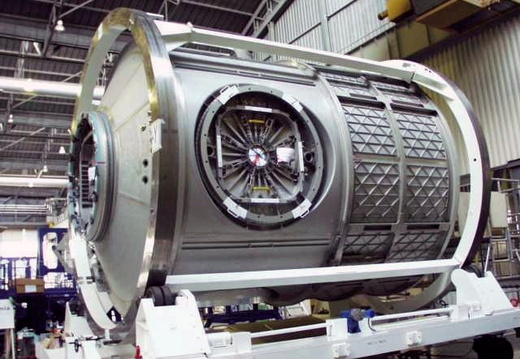
HARMONY
Module Overview
Harmony, also known as Node 2, is a connecting module of the International Space Station (ISS). Built by Thales Alenia Space in Italy for NASA and the European Space Agency, Harmony serves as a central hub connecting the U.S. Destiny Laboratory, the European Columbus laboratory, and the Japanese Kibo laboratory. Harmony was launched aboard the Space Shuttle Discovery on October 23, 2007, during mission STS-120, significantly expanding the living and operational space of the ISS.
Key Details
- Launch Date: October 23, 2007
- Launch Vehicle: Space Shuttle Discovery (STS-120)
- Launch Site: Kennedy Space Center, Florida, USA
- Mass: Approximately 14,288 kg (31,500 lbs)
- Length: 7.2 m (23.6 ft)
- Diameter: 4.4 m (14.4 ft)
- Pressurized Volume: 75.5 m³ (2,666 cu ft)
Objectives
The primary objectives of the Harmony module include:
Serving as the main connecting hub for international laboratory modules, facilitating crew and equipment transfers between modules.
Providing electrical power, thermal control, air, and water circulation to connected modules.
Offering docking ports for visiting spacecraft, including Crew Dragon, Cargo Dragon, Cygnus, and other international vehicles.
Expanding the ISS's habitable space and enhancing international cooperation.
Mission Highlights
- Launch and Installation: Harmony was successfully launched and installed on the ISS during the Space Shuttle Discovery mission STS-120 in October 2007.
- Critical Connections: After installation, Harmony became the essential hub for the attachment of international modules: the Columbus laboratory (Europe), Kibo laboratory (Japan), and additional docking ports for commercial spacecraft.
- First International Dockings: Harmony facilitated the docking and integration of Columbus and Kibo modules, marking a significant milestone in international space collaboration.
- Commercial Crew and Cargo Gateway: Harmony has played a crucial role as the docking point for commercial spacecraft such as SpaceX’s Crew Dragon and Cargo Dragon vehicles, significantly expanding ISS capabilities.
- Infrastructure and Utility Support: Harmony houses critical systems for power distribution, thermal control, and life support, supporting multiple ISS modules and visiting spacecraft.
Current Status
As of 2025, Harmony continues to serve as a critical hub for the ISS, hosting multiple visiting spacecraft and providing essential services to connected laboratories and crew habitation areas.
Legacy
Harmony embodies international cooperation and the growing partnership between governmental and commercial entities in space exploration. Its successful operation has significantly enhanced the ISS's scientific capabilities and operational flexibility, enabling expanded human presence and research activities in orbit.
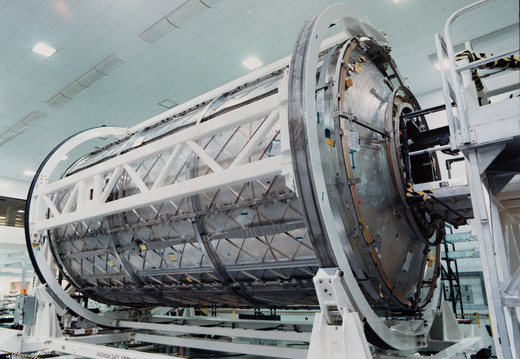
DESTINY
Module Overview
Destiny, also known as the U.S. Laboratory Module, is the primary research facility operated by NASA aboard the International Space Station (ISS). Launched aboard Space Shuttle Atlantis on February 7, 2001, during mission STS-98, Destiny provides a dedicated environment for scientific experiments in physics, biology, materials science, medicine, and Earth observation. It also houses critical systems controlling life support, power distribution, and communication for the ISS.
Key Details
- Launch Date: February 7, 2001
- Launch Vehicle: Space Shuttle Atlantis (STS-98)
- Launch Site: Kennedy Space Center, Florida, USA
- Mass: Approximately 14,515 kg (32,000 lbs)
- Length: 8.5 m (28 ft)
- Diameter: 4.3 m (14 ft)
- Pressurized Volume: 106 m³ (3,750 cu ft)
Objectives
The primary objectives of the Destiny module include:
Providing facilities for long-term scientific research in microgravity across multiple scientific disciplines.
Serving as the central operational hub for the U.S. segment, managing environmental, power, and communication systems.
Supporting a range of external experiments through attachment points for payloads on its exterior.
Facilitating international and commercial collaboration in space-based research.
Mission Highlights
- Launch and Installation: Destiny was successfully delivered and installed on the ISS by astronauts aboard Space Shuttle Atlantis (STS-98) in February 2001.
- Initial Activation: Astronauts conducted three spacewalks to integrate Destiny into the ISS, activating its critical research and control systems shortly after installation.
- Scientific Milestone: Destiny quickly became the core facility for numerous groundbreaking experiments in human physiology, fundamental physics, materials science, and Earth sciences.
- Operational Hub: Destiny hosts critical U.S. segment control systems, including the station’s primary environmental controls, communications infrastructure, and power distribution network.
- Continuous Utilization: Since its deployment, Destiny has supported thousands of experiments, significantly advancing scientific knowledge and technology in space.
Current Status
As of 2025, Destiny continues to serve as the main laboratory and operational control center for the U.S. segment of the ISS. It remains actively engaged in a broad spectrum of scientific research and technology development activities.
Legacy
Destiny represents the forefront of space-based scientific research, reflecting NASA’s commitment to exploration, discovery, and international collaboration. Its enduring success has greatly advanced human understanding in multiple scientific fields, laying essential groundwork for future human exploration beyond Earth’s orbit.
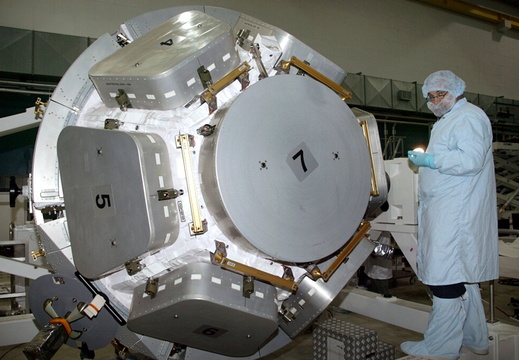
CUPOLA
Module Overview
The Cupola is an observatory module attached to the International Space Station (ISS), providing astronauts with a panoramic view of Earth and the exterior of the station. Built by Thales Alenia Space for the European Space Agency (ESA), the Cupola was launched aboard Space Shuttle Endeavour during mission STS-130 on February 8, 2010, and installed on the Tranquility node (Node 3). Its seven large windows offer unmatched visibility, greatly enhancing ISS operations, Earth observation, and crew well-being.
Key Details
- Launch Date: February 8, 2010
- Launch Vehicle: Space Shuttle Endeavour (STS-130)
- Launch Site: Kennedy Space Center, Florida, USA
- Mass: Approximately 1,805 kg (3,979 lbs)
- Height: 1.5 m (4.9 ft)
- Diameter: 2.95 m (9.7 ft)
- Number of Windows: 7 (one central and six radial windows)
Objectives
The primary objectives of the Cupola module include:
Providing a panoramic viewing platform to support ISS operations, including robotics operations and spacecraft docking.
Enhancing Earth observation and scientific photography capabilities for environmental monitoring and research.
Improving astronaut psychological well-being by offering direct views of Earth and space.
Facilitating visual monitoring of external station hardware and spacewalk activities.
Mission Highlights
- Launch and Installation: The Cupola was delivered and successfully installed on the ISS during Space Shuttle Endeavour’s mission STS-130 in February 2010.
- First Operational Use: Shortly after installation, astronauts opened Cupola's windows, providing an unprecedented, panoramic view of Earth and external ISS structures.
- Critical Role in Robotics: Cupola quickly became the primary observation post for operating the Canadarm2 robotic arm, facilitating spacecraft docking, and assisting with external maintenance.
- Photography and Earth Observation: Astronauts regularly use Cupola for high-resolution photography and real-time observations of weather phenomena, natural disasters, and environmental changes.
- Astronaut Experience: The Cupola is widely regarded by astronauts as a favorite place aboard the ISS, significantly enhancing crew morale through direct views of Earth.
Current Status
As of 2025, Cupola remains a critical operational and observational platform on the ISS, regularly used for Earth monitoring, robotics operations, spacecraft docking, and scientific research. It continues to be integral to daily ISS operations.
Legacy
The Cupola represents an iconic advancement in human spaceflight, symbolizing both technological achievement and human curiosity. Its breathtaking views of Earth have inspired millions worldwide, serving as a reminder of humanity's interconnectedness and responsibility to our home planet.
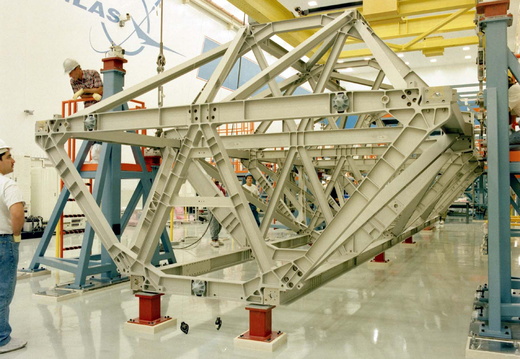
TRUSS
Structure Overview
The Integrated Truss Structure (ITS) forms the primary backbone of the International Space Station (ISS), providing support for the station’s solar arrays, radiators, and various external payloads. Composed of several interconnected segments, the ISS Truss stretches across the station and houses critical systems for power distribution, thermal control, and data handling. Assembly of the truss took place over multiple Space Shuttle missions between 2000 and 2009, representing one of the most complex and significant engineering efforts in space history.
Key Details
- Assembly Period: October 2000 – March 2009
- Total Length: Approximately 109 meters (357 feet)
- Segments: Z1, S0, S1, P1, S3/S4, P3/P4, S5, P5, S6, P6
- Total Mass: Approximately 190,000 kg (419,000 lbs)
- Primary Functions: Power generation, thermal control, structural support, and equipment mounting
Objectives
The primary objectives of the ISS Truss Structure include:
Providing structural support for the station’s large solar arrays, generating power to sustain ISS operations.
Mounting radiators and thermal control systems essential for dissipating heat generated by station electronics.
Supporting critical communications, data, and electrical power distribution across all ISS modules.
Offering attachment points for external experiments, payloads, and logistical platforms.
Mission Highlights
- Initial Installation (Z1 Truss): Launched and installed during mission STS-92 in October 2000, the Z1 segment provided early support and control capabilities.
- Central Backbone (S0 Truss): Installed during STS-110 in April 2002, the S0 Truss formed the core attachment point, anchoring the truss to the ISS’s Destiny module.
- Expansion (S1 and P1 Trusses): Added during missions STS-112 (October 2002) and STS-113 (November 2002), these segments housed initial radiators and electronics for power distribution.
- Solar Array Segments (P3/P4, S3/S4, P5, S5, S6, P6): These segments, delivered between 2000 and 2009, carried large photovoltaic arrays that significantly increased power generation capacity.
- Completion (S6 Truss): The final segment, the S6 Truss, installed in March 2009 during mission STS-119, completed the station’s primary structural framework.
Current Status
As of 2025, the ISS Truss continues to support all critical station operations, providing power, thermal management, structural stability, and mounting points for ongoing scientific research and experiments.
Legacy
The ISS Integrated Truss Structure stands as a testament to human ingenuity and international cooperation. Its complex assembly in orbit, unprecedented scale, and successful long-term operation have paved the way for future large-scale structures in space, demonstrating the capabilities necessary for ambitious exploration beyond Earth orbit.